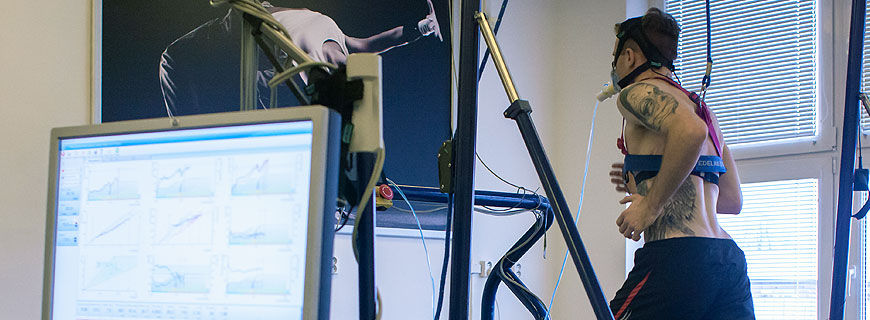
Laboratory of Stress Physiology
The object of scientific study in this laboratory at the Department of Natural Sciences in Kinanthropology at the UP Faculty of Physical Culture is the human body. The laboratory experts explore its limits in extreme conditions. One of the variables falling into their area of interest is altitude. They investigate the activity of the autonomic nervous system by monitoring the variability of heart rate. They also evaluate human physical performance on the basis of various stress tests. The team includes nutrition experts who focus on the preparation of diets and fight against obesity.
Simulation of higher altitudes
Interested parties can try a simulation of higher altitudes in the laboratory, breathing air deprived of oxygen with a respiration mask on, in a lying position or during walking or running. This simulates exposure to conditions that prevail in altitudes up to 6400 metres. The research findings may be practically used for better acclimatisation of travellers who ascend to higher altitudes, in order to prevent acute elevation sickness. One of the purposes of such a “visit” to a simulated altitude is also an increase in performance, particularly in endurance sports.
Activity of the autonomic nervous system
Experts also monitor the activity of the autonomic system by means of measuring heart frequency, which varies depending on breathing. Sportspersons use this measurement to determine their degree of fatigue and recovery or overstrain after arduous training. It is further used for observation of acclimatisation during travels across more time zones or during acclimatisation for higher altitudes. In terms of the populace, this measurement is used to assess the endurance of physical and mental stress.
Stress tests for the public and sportspersons
The Laboratory of Stress Physiology also serves the public - interested persons are allowed to take a stress test that will check up on their body condition and physical performance. The aim of maximum stress tests is to expose a person to complete exhaustion by gradually increasing stress. Monitored parameters include the maximum oxygen consumption, maximum heart rate, anaerobic threshold, and achieved performance.